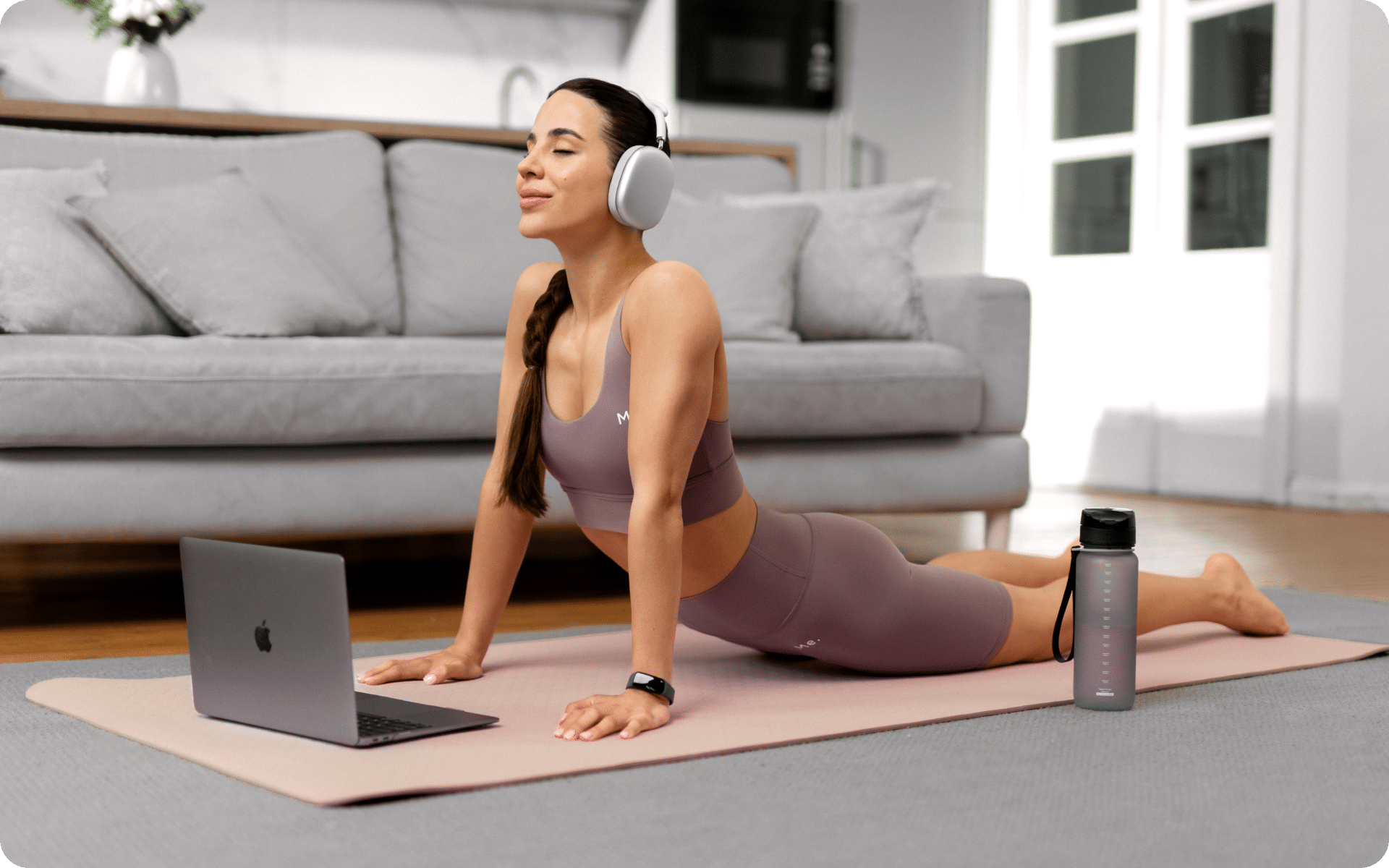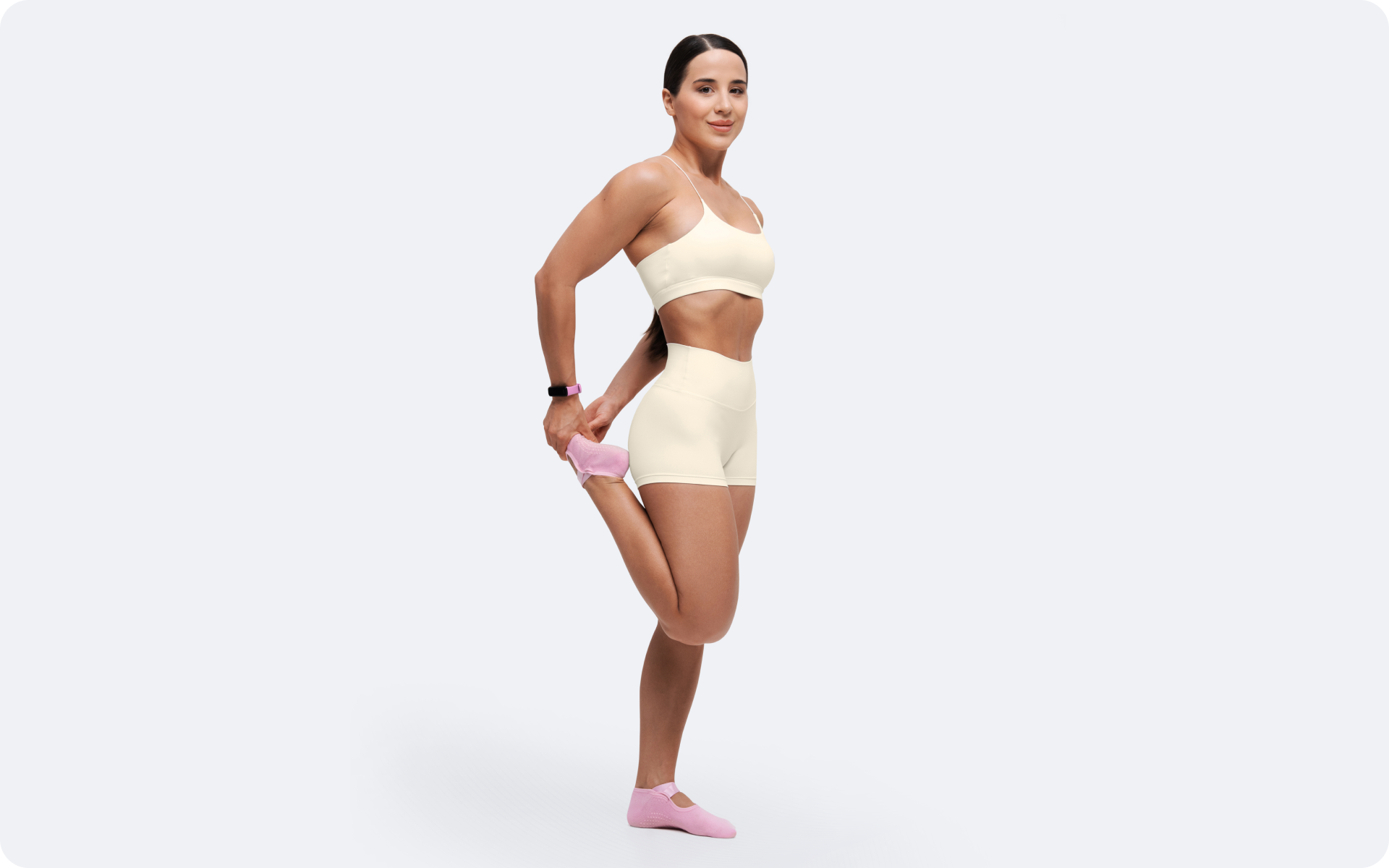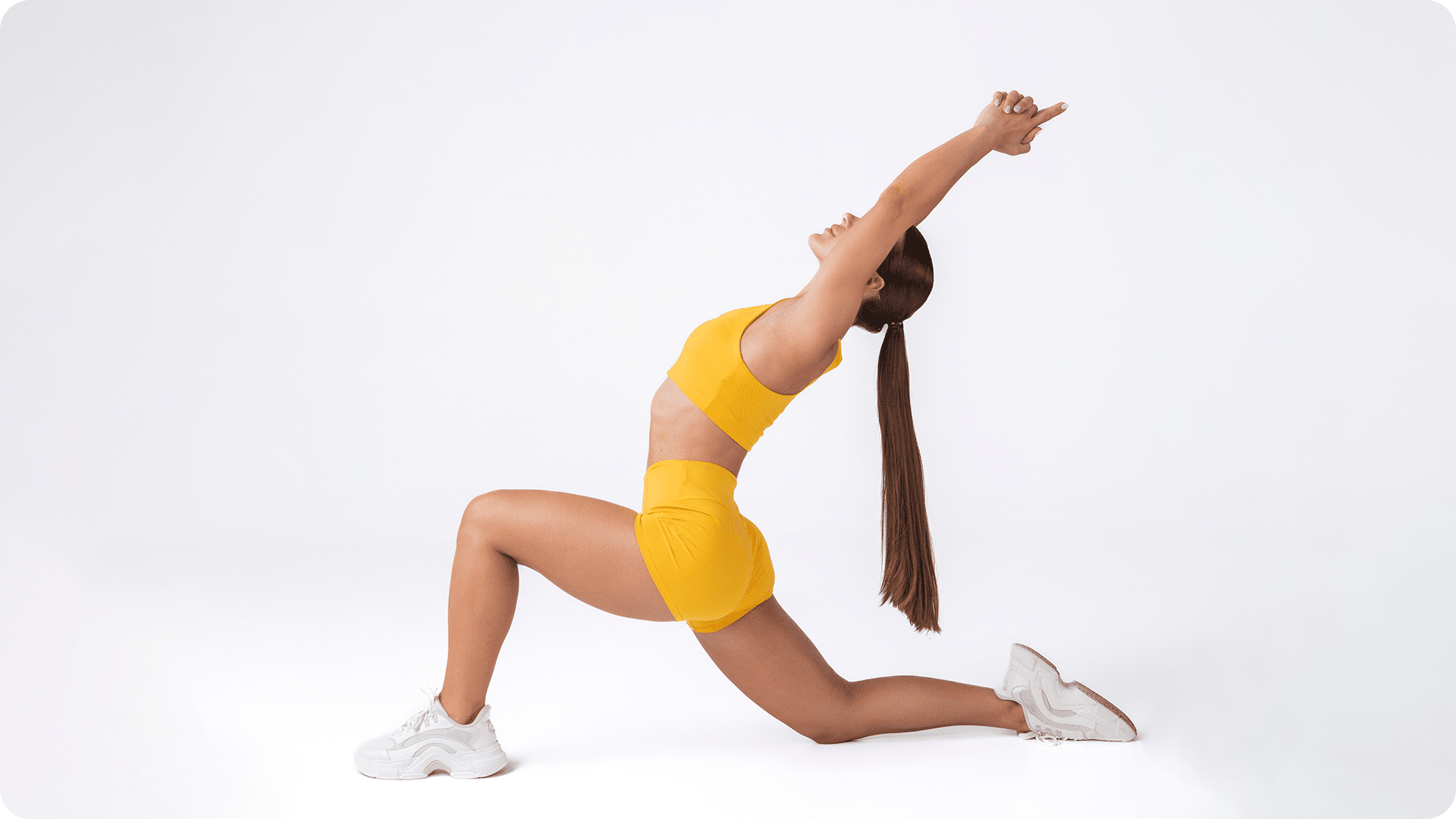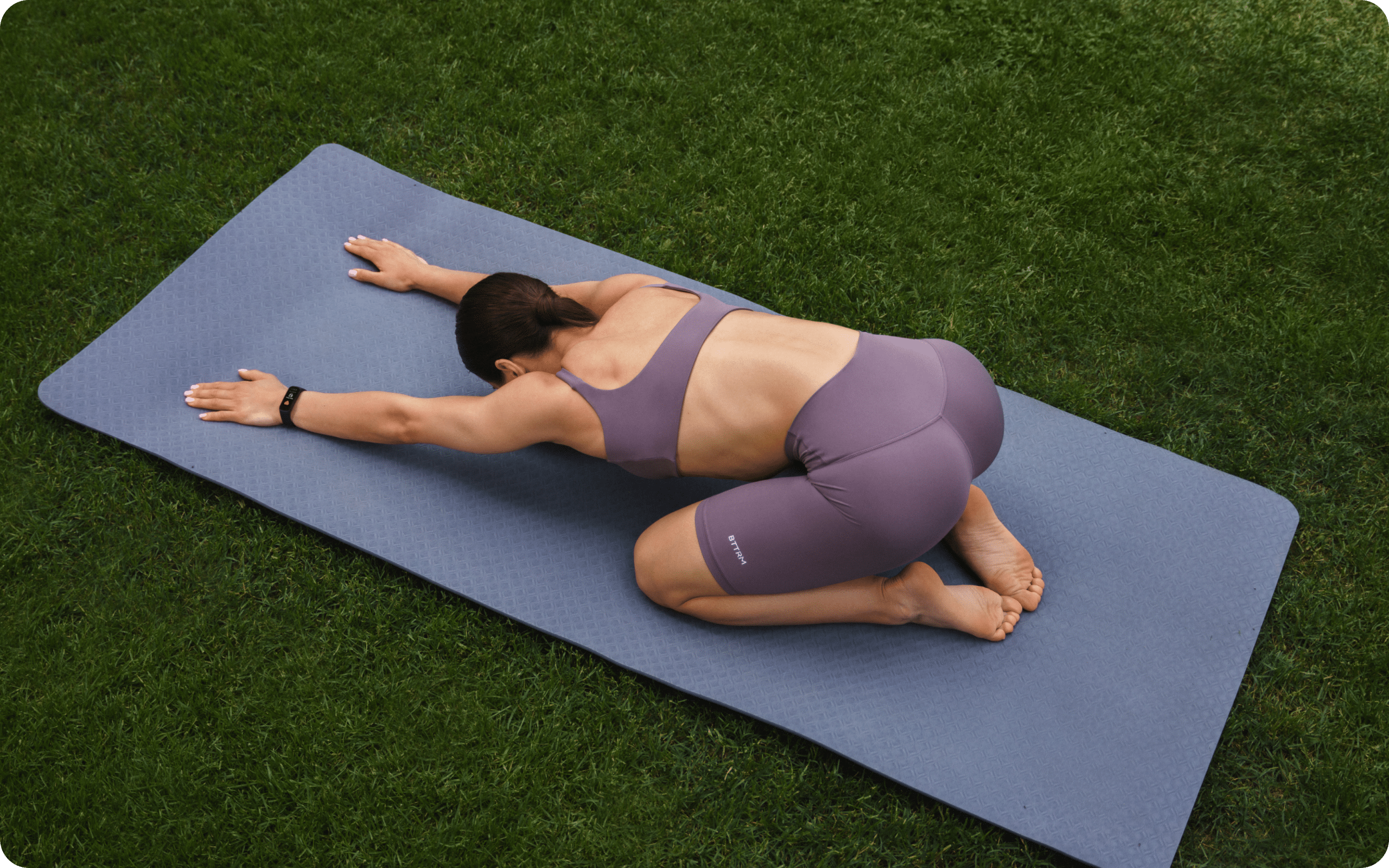Let’s be honest, many of us give a lot of reasons for slacking off with our fitness, the primary one being not having easy access to a gym. Although it sounds like a genuine concern, the truth is that you don’t necessarily need to go to the gym to work out. You can always work out at home, even without any equipment and still get fit. That is why we’ve designed this 20-day workout challenge. It can help you lose weight, tone your body, and increase muscle strength and size. So please take a look at it!
Can You See Workout Results in 20 Days?
In just 20 days, you can start to see some workout results, although the extent of these changes will be dependent on several factors such as your starting fitness level, the exercise program you choose, your diet, and how consistently you adhere to your routine.
Typically, you may notice increased muscle tone from regular strength training, particularly if you’re new to exercising. This is due to the body’s initial response to new physical activity.
In addition, you may experience improved cardiovascular endurance if you engage in regular cardio workouts, making aerobic activities less tiring. Regular stretching or yoga can enhance your flexibility and reduce muscle stiffness.
Several factors influence these results. The intensity and type of exercise are crucial – more intense and varied workouts can yield faster results. A balanced approach that includes cardio, strength training, and flexibility exercises is generally effective.
Diet and nutrition also play significant roles – a nutritious diet supports muscle growth and fat loss, with adequate protein intake being vital for muscle repair and growth (1). Furthermore, ensuring proper rest and recovery, including adequate sleep, is essential for progress and injury prevention (2).
While profound transformations are unlikely in just 20 days, you can expect to feel more energetic and notice slight physical changes. Establishing a consistent routine during this period is crucial for setting the stage for long-term fitness goals.
How Much Can I Lose in 20 Days?
The amount of weight you can lose in 20 days will depend on various factors, including your starting weight, diet, exercise regimen, and overall health. On average, a safe and sustainable weight loss rate is approximately 1 to 2 pounds per week (3), which translates to approximately 3 to 6 pounds in 20 days.
Whether you’re a workout beast or just a beginner making your first foray into the world of fitness and dieting – BetterMe has a lot to offer to both newbies and experts! Install the app and experience the versatility first-hand!
How Can I Transform My Body in 20 Days?
Transforming your body in 20 days is ambitious, but with focused effort, you can achieve noticeable changes. The key is to set realistic goals and implement effective strategies that promote overall health and fitness.
Realistic Body Transformation Goals:
- Enhanced Fitness Level: Aim to improve your stamina, strength, and flexibility. While a complete transformation may not be possible in such a short time, improvements in these areas are achievable.
- Slight Muscle Definition: Beginners may notice increases in muscle tone with consistent strength training and proper nutrition.
- Improved Posture and Core Strength: With targeted exercises, you can enhance your posture and strengthen your core muscles.
Effective Strategies:
- Structured Workout Plan: Engage in a balanced mix of cardio, strength training, and flexibility exercises. Aim for at least 30 minutes of moderate-intensity physical activity most days of the week.
- Nutrition and Hydration: Eat a balanced diet rich in lean proteins, whole grains, fruits, and vegetables. Stay hydrated to support metabolism and energy levels.
- Rest and Recovery: Ensure you get adequate sleep and allow for rest days to help muscles recover and grow.
Read more: 5-Minute Pilates Abs: Get a Flat Stomach and Strengthen Your Core (Super Intense)
20-Day Workout Challenge Routine
Unlike other regimes that require workout equipment, this plan doesn’t. It concentrates instead on body weight workouts, which makes it suitable for beginners. It ranks among the best workout plans for men who are trying to build muscle strength and women who are trying to lose belly fat. So what does it include? Let’s look at the circuit.
The 20-Day Workout Challenge Circuit
There are specific activities you will do every day. They have also been subdivided into smaller circuits to make the entire 20-day workout plan appear as follows:
- Monday: Circuit A
- Tuesday: Circuit B
- Wednesday: Circuit C
- Thursday: Circuit A
- Friday: Circuit B
- Saturday: Circuit C
- Sunday: Rest
You’ll repeat the same regime for the next 20 days. First, let’s look at what’s in these circuits:
Workout Challenge Circuit A
Circuit A consists of cardiovascular exercises that have been carefully selected to help you with the following:
- Burn calories
- Shed belly fat
- Increase muscle strength and mass using body weight
- Improve your endurance
These are some of the benefits you’ll reap from doing this exercise. You’ll perform this circuit on Mondays and Thursdays. Below are the exercises it includes:
Push-Ups
Target: Chest, shoulders, triceps, abdominal muscles
- Start on all fours and stretch your legs behind you.
- Keep your back straight and your body parallel to the ground.
- Lower your body toward the floor and let your chest graze the floor.
- Hold for a second and then push back up.
- Repeat 10 times.
Basic Squats
Target: Glutes, core, quads, hamstrings
- Start in a standing position with your arms by your sides.
- Push your butt behind and start to lower yourself as if taking a seat.
- Hold the squat for a second or two.
- Rise back up and clench your glutes.
- Repeat 10 times.
Burpees
Target: Legs, hips, butt, arms, chest, shoulders, core
- Start in a standing position and then drop into a squat.
- From the squat, move into the high plank position. Again, remember to keep your back straight and your arms directly under your shoulders.
- Do a push-up and then jump back into the standing stance.
- Repeat 10 times.
Planks
Target: Back and abdominal muscles
- Start on all fours and stretch your legs behind you.
- Tighten your core, keep your back straight, and hold this position for 30 seconds.
- Repeat 3 times.
Forward Lunges
Target: Abs, back, glutes, quads, calves, hamstrings
- Start in a standing position and take a giant step in front of you using either leg.
- Lower the rear leg toward the ground. The front leg should form a right angle in front of your body.
- Start moving up and down and holding the move at the top for several seconds.
- Repeat 10 times on each side.
Russian Twists
Target: Obliques
- Start in a sitting position on the floor and bend your knees.
- Lean back slowly and lift your feet off the floor.
- Twist your torso to either side without moving your legs.
- Repeat for 30 seconds.
Side Reach
Target: Obliques, deep (transverse) abdominals
- Lie on your right side and stack your legs. Your right arm should rest on the ground and your left one on top of your left leg.
- Tighten your core and reach your left hand down as if trying to touch your ankle. You’ll feel your sides contracting.
- Return to the starting stance and repeat.
- Repeat 8 times on each side.
Reasons why BetterMe is a safe bet: a wide range of calorie-blasting workouts, finger-licking recipes, 24/7 support, and challenges that’ll keep you on your best game – and that just scratches the surface! Start using our app and watch the magic happen.
Mountain Climbers
Target: Triceps, shoulders, core, and legs
- Start on all fours and stretch your legs behind you.
- Keep your back straight and your arms directly beneath your shoulders.
- Bring your left-right close to your chest and as you return it to the starting position, bring the left one toward your chest.
- Increase your pace.
- Repeat for 30 seconds.
Abdominal Crunch
Target: Core, upper body, obliques
- Lie on your back and bend your knees.
- Fold your arms across your chest, tighten your core, and raise your upper body off the ground.
- Hold on the top of the movement and then lower to the ground.
- Repeat 12 times.
Step-Ups
Target: Quads and hamstrings
- Stand in front of a staircase and place one foot on it.
- Place the other foot on the staircase and then step back to the initial position.
- Repeat for 45 seconds.
Read More: Push Ups Vs. Bench Press: Which Workout Is Better for Maximum Gains?
Workout Challenge Circuit B
This circuit consists of an outdoor aerobic activity, which in this case is running. Yes, you heard it right. We’re going to be sweating on the track or in the park today. We’re not asking you to run as if you’re in the Olympics and trying to get a gold medal. We don’t recommend such a pace, but rather one that’s well and good as long as you can keep it up.
We suggest you maintain a speed of above 5 mph. The Mayo Clinic reveals you’ll burn 606 calories if you weigh 160 pounds and run for an hour while maintaining this pace. So don’t underestimate the power of running on this fitness journey. Here are some other basic running tricks and tips we recommend:
- Wearing the correct gear
Make sure you’re dressed for the occasion. Wear comfortable, light clothes and comfortable shoes.
- Tag along with a buddy
You can tag along with your friend or sibling for motivation purposes or to hold you accountable.
- Grab your earphones
If you’re running alone, we advise you to carry your earphones with you and listen to some music when you run. This will help divert attention from your fatigue.
- Carry a water bottle
Of course, you’ll need to hydrate when running, so don’t leave your water bottle behind.
If you can’t run for whatever reason, we recommend you substitute this with skipping rope. This is another effective cardiovascular exercise that helps torch calories. Here’s how to do it:
- Start upright with your feet shoulder-width apart. Your arms should be resting by your sides and gripping your skipping rope handles.
- Start swinging your forearms in a circular motion while still gripping the rope. As you do this, lift both feet.
- The rope will go under your feet while you lift them up in the air.
- The target is to do 1,000 reps and you can rest for a minute after every 100.
Workout Challenge Circuit C
This circuit consists of stretching and yoga exercises. These exercises are quite effective for:
- Fighting muscle tightness
- Increasing flexibility
- Reducing back pain
- Building muscle strength
The exercises included in this circuit are as follows:
Side Stretch
Target: Obliques
- Stand upright and lift your left arm.
- Hold your left wrist using your right hand and gently pull your left arm toward the right. Breathe deeply and make sure your left arm isn’t over your left ear.
- Hold the stretch for several breaths.
- Gently bring your hands down and repeat the same on your right side.
- Repeat several times.
Warrior 1
Target: Core, back, and leg muscles
- Stand upright with your feet slightly wider than hip-width apart.
- Point your left foot to the left and keep your right one straight.
- Turn to your left and bend your left leg.
- Stretch your arms straight and above your head.
- Now, try posing from the opposite side.
- Repeat 5 times.
Warrior II Pose
Target: Back, leg, and pelvic floor muscles
- Start in a standing position with your feet slightly wider than hip-width apart.
- Stretch your arms out to the sides with your palms face down.
- Slowly turn your left foot out to a 90-degree angle and your right foot slightly to the right. Bend your left leg to a 90-degree angle, with your knee over your ankle.
- Press the outside of your right heel on the floor and then stretch out your arms.
- Turn your head gently to the left and look past your fingers.
- Hold this stance for 30 seconds before switching sides.
- Repeat 5 times.
Standing Quad Stretch
Target: Quads
- Stand upright with your legs hip-width apart.
- Lift your left foot behind you and grab it using your left hand.
- Pull in your left leg as much as you can or until you feel your left thigh stretch.
- Hold the stretch for 10 to 30 seconds.
- Repeat 3 times on each leg.
Standing Hamstring Stretch
Target: Hamstrings
- Start upright. Keep your right foot on the floor and slightly bend your right knee. Extend your left leg in front.
- Flex your left foot with its heel pressed on the floor and toes facing up.
- Place your hands on your right thigh and lean slightly forward.
- Hold for 30 seconds and then rest for 10 seconds.
- Repeat with the other leg.
- Do this 3 times.
BetterMe: Health Coaching app helps you achieve your body goals with ease and efficiency by helping to choose proper meal plans and effective workouts. Start using our app and you will see good results in a short time.
Bird Dog Exercise
Target: Back and pelvic floor muscles
- Start on your fours.
- Tighten your core, lift your right leg behind you to hip level, and stretch,
- Stretch your left hand in front of you simultaneously and keep your back as straight as possible.
- Hold this for 10 seconds.
- Return to the initial position and switch the leg and arm.
- Repeat 12 times.
Hip Flexor Stretch
Target: Hip flexors
- Kneel on your right knee. Make sure you cushion your right kneecap using a folded towel.
- Place your left foot in front of you, bend your knee, and rest your left hand on your left leg for stability.
- Place your right hand on your right hip to avoid bending at your waist.
- Lean forward to help your right thigh stretch.
- Hold for at least 30 seconds.
- Switch legs and repeat.
- Do this 5 times for each leg.
Butterfly Stretch
Target: Hips, knees, groin, and inner thighs
- Start in a sitting position. Bring your feet together and let your soles touch each other. Keep your knees flexed to the outside.
- Keep your back straight and reach out for your feet using your hands.
- Slowly and gently lean forward.
- Start to push your thighs down using your elbows gently. Push them until you feel your inner thighs stretch.
- Hold this position for 30 seconds.
- Relax for 10 seconds and repeat.
- Do this 3 times.
Child’s Pose
Target: Back and core muscles
- Start in a kneeling position with your hips and butt resting on your lower legs and feet.
- Spread your knees apart and fold your body forward. Bring your chest toward your knees. If possible, bend until your forehead is on the floor.
- Extend your arms to the front and keep your palms face down.
- Maintain the position for 20 to 30 seconds.
- Use your hands to gently lift your chest off the floor to the initial upright position.
- Repeat 3 times.
Downward Facing Dog
Target: Chest, arms, back, and leg muscles
- Get on all fours and place your toes under your feet and your knees below your hips.
- Breathe out and slowly straighten your legs, allowing your heels to leave the ground.
- Lift your butt as much as you can toward the ceiling as you push your heels to the floor.
- Slowly and lightly press your palms on the floor or mat.
- Slowly straighten your arms as you now start to draw your shoulder blades down.
- Relax your head and try to position it between your upper arms.
- Hold this position for 30 seconds.
- Repeat 5 times
Glute Bridge
Target: Glutes and pelvic floor
- Lie on your back and bend your knees. Press your feet flat on the ground and keep them hip-width apart. Rest your arms by your sides with your palms facing down.
- Contract your glutes and pelvic floor muscles and start to lift your butt off the floor. Lift as high as you can without straining or disrupting your form.
- Hold this position for 5 seconds.
- Relax the muscles and slowly lower your bum to the floor.
- Repeat 10 times.
- Rest for a minute and then perform another set. You can perform another extra set if you so desire.
Side Lunge Stretch
Target: Hamstrings, glutes, quads, and inner thighs
- Stand upright with your feet hip-width apart.
- Take a huge step to your left and keep both feet facing forward.
- Place your hands on your hips and slowly bend your left knee before starting to lower your hips to the left.
- Hold this position for 10 seconds and then push yourself up to the upright stance. Lower your hips again to perform another side lunge on your left side.
- Repeat on your right side.
- Repeat at least 10 times on each side.
Cat-Cow Pose
Target: Back and core muscles
- Start in a kneeling position on the floor. Keep your hands shoulder-width apart, directly beneath your shoulders, and stretched in front of you. Keep your knees directly below your hips.
- Inhale and curve your lower back, bringing your head up. This will tilt your pelvis up.
- Exhale and bring your core muscles in while arching your spine and bringing your head and pelvis down.
- Repeat 5 times
While 20 days is a short period for significant slimming, you can make noticeable progress by adopting a healthy diet, regular exercise, and lifestyle changes. Focus on reducing calorie intake, increasing physical activity, and staying hydrated. Although you may not achieve a complete transformation, these efforts can lead to visible improvements and set the stage for continued progress. Losing 5 pounds in a week is ambitious and not typically recommended, as it may require extreme calorie restriction or excessive exercise, which can be unhealthy and unsustainable. A safer and more sustainable weight loss rate is 1 to 2 pounds per week (3). You should focus on a balanced diet and regular exercise for gradual and healthy weight loss. Losing belly fat in 20 days is challenging, but you can see some reduction by adopting a comprehensive approach. Focus on a balanced diet with reduced sugar and refined carbs, regular cardiovascular and strength training exercises, and adequate hydration. While significant fat loss may not be achieved, these strategies can lead to noticeable improvements and lay a foundation for further progress. A 20-20-20 workout consists of three segments, each of which lasts 20 minutes, focusing on different types of exercise. Typically, it includes 20 minutes of cardiovascular activity, 20 minutes of strength training, and 20 minutes of flexibility or core exercises. This balanced workout structure enhances overall fitness by improving endurance, building muscle, and increasing flexibility, which makes it an effective and efficient way to target multiple fitness areas in a single session.Frequently Asked Questions
Can I get slim in 20 days?
Can I lose 5 lbs in a week?
Can you lose belly in 20 days?
What is a 20-20-20 workout?
The Bottom Line
We’ve carefully selected practical exercises to include in this workout challenge. They have been found effective for weight loss, toning, and building muscle and strength.
DISCLAIMER:
This article is intended for general informational purposes only and does not serve to address individual circumstances. It is not a substitute for professional advice or help and should not be relied on for making any kind of decision-making. Any action taken as a direct or indirect result of the information in this article is entirely at your own risk and is your sole responsibility.
BetterMe, its content staff, and its medical advisors accept no responsibility for inaccuracies, errors, misstatements, inconsistencies, or omissions and specifically disclaim any liability, loss or risk, personal, professional or otherwise, which may be incurred as a consequence, directly or indirectly, of the use and/or application of any content.
You should always seek the advice of your physician or other qualified health provider with any questions you may have regarding a medical condition or your specific situation. Never disregard professional medical advice or delay seeking it because of BetterMe content. If you suspect or think you may have a medical emergency, call your doctor.
SOURCES:
- Editorial: Nutritional Strategies to Promote Muscle Mass and Function Across the Health Span (2020, frontiersin.org)
- The effect of rest days on injury rates (2011, nih.gov)
- Key Recommendations (n.d., nih.gov)






























